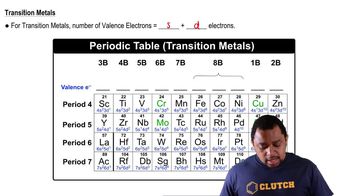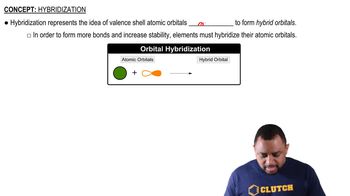Determine whether each molecule is polar or nonpolar. a. SiCl4 b. CF2Cl2 c. SeF6 d. IF5
 Tro 4th Edition
Tro 4th Edition Ch.10 - Chemical Bonding II: Molecular Shapes & Valence Bond Theory
Ch.10 - Chemical Bonding II: Molecular Shapes & Valence Bond Theory Problem 53c
Problem 53cThe valence electron configurations of several atoms are shown here. How many bonds can each atom make without hybridization? c. F 2s22p5
 Verified step by step guidance
Verified step by step guidance
Verified Solution
Key Concepts
Valence Electrons

Bonding Capacity

Hybridization

The valence electron configurations of several atoms are shown here. How many bonds can each atom make without hybridization? a. Be 2s2
The valence electron configurations of several atoms are shown here. How many bonds can each atom make without hybridization? b. P 3s23p3
The valence electron configurations of several atoms are shown here. How many bonds can each atom make without hybridization? c. O 2s22p4
Write orbital diagrams (boxes with arrows in them) to represent the electron configurations—without hybridization—for all the atoms in SF2. Circle the electrons involved in bonding. Draw a three-dimensional sketch of the molecule and show orbital overlap. What bond angle do you expect from the unhybridized orbitals? How well does valence bond theory agree with the experimentally measured bond angle of 98.2° ?